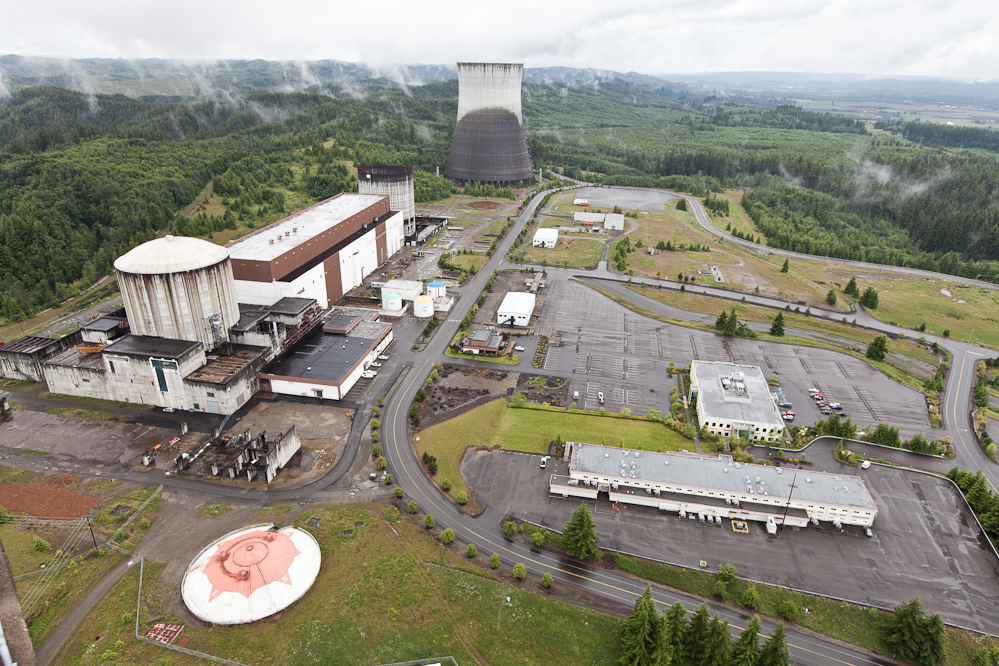Nuclear Reactors 105 - Washington Public Power Supply System History 1
I have been intending to talk about the failed Washington Public Power Supply System(WPPSS) reactor construction program but kept putting it off. Given that there is a new push for nuclear power in Washington State, perhaps this is the right time to talk about WPPSS.
WPPSS was set up as a municipal corporation in 1957 by the Washington State Legislature, giving it the same legal status as a city. The purpose of WPPSS was to provide a framework for public utility companies to combine their resources to build the power generation facilities necessary to insure a steady and adequate supply of electricity for the citizens of the state. Seattle City Light was the largest of the sixteen utilities that bought into WPPSS. The board for WPPSS consisted of directors from the member utilities. The first WPPSS project was a dam at Packwood Lake which was completed in 1964.
Early WPPSS projections suggested that the electricity consumption of Washington State would double every ten years. This would eventually exceed the capacity of hydroelectric generation in the state. There had been a national push for nuclear power generation in the fifties. As I have commented before, this was partially connected to the development and construction of the U.S. nuclear weapons arsenal. WPPSS concluded that nuclear power would be a good choice to provide clean and plentiful energy for future Washington State needs.
WPPSS began developing plans for a power reactor at Hanford. In 1971, public utilities in the state signed up to share the costs and benefits of the reactor. The following year, a second Hanford reactor and a reactor at Satsop in Gray Harbor County were proposed. Then a third Hanford reactor and a second Satsop reactor were added to the project.
The project was plagued by cost overruns and scheduling delays. The contractors often ran ahead of the designers resulting in designers often redrawing their plans to match what had been built. The regulatory demands of the Nuclear Regulatory Commission added to the costs. The biggest problem was the incompetent management of the WPPSS board of directors. In their defense, it can be said that they had no previous experience with the complex world of nuclear engineering. They had trouble selecting competent contractors and quality control inspectors often complained that work was not being done correctly or corrected after inspections. Even the board was not informed of all the problems and work delays as the project fell further behind schedule. Seattle City Light signed up to take power from the first three of the new WPPSS reactors. This obligated the ratepayers to pay for the construction of the reactors. In 1973, Seattle City Light was offered the chance to also participate in the construction of the planned fourth and fifth WPPSS reactors.
On the pro side of the debate over Seattle's participation in the WPPSS project was the energy shortage of 1973 and low snow packs for hydropower around the same time. On the con side of the debate, the Washington Environmental Council filed suit against Seattle City Light to force an environmental impact statement to be produced with respect to the Hanford reactors which Seattle City Light had contracted with for future power. The law suit was dropped when the Superintendant of Seattle City Light agreed to open up the discussion to public input by creating a twenty seven member Citizen's Oversight Committee. The Energy 1990 study was one result of this expansion of the process. Seattle City Light proposed a 10% share of two of the new reactors which was reduced to a 5% share later. The Committee rejected nuclear power generation and suggested that conservation was the best choice. The Seattle City Council agree with the Committee and rejected any investment in the last two of the new reactors. Conservation programs did help Seattle City Light meet its goals.
Satsop, Washington WPPSS construction site :
